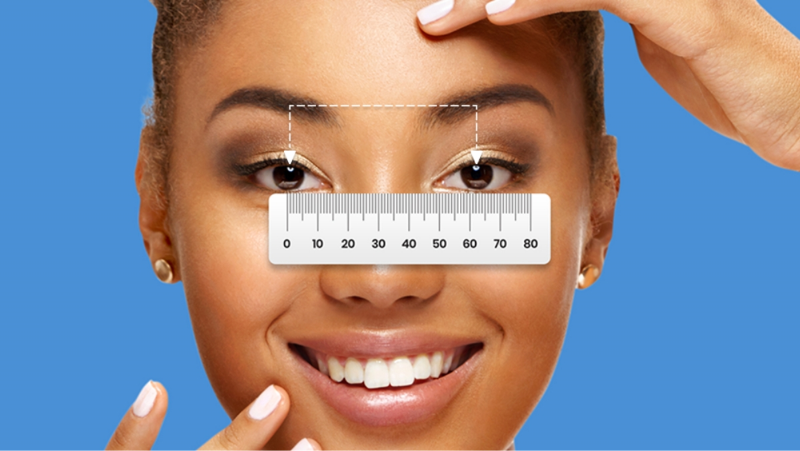How to measure your Pupillary Distance
Your what-illary distance? Pupillary distance. Learn what it is and how to measure your own.

What is Pupillary Distance (PD)
Simple: your PD, or pupillary distance, is how much space you can find between the centers of your two pupils. Take a look around and you’ll notice that no two faces are alike—and this is one reason why. Not everyone’s eyes are the same distance apart! Getting your PD right will help your eyes focus when corrected by the glasses you wear.
How to measure PD?
Option 2
PD Calculator
Use our website and a camera to measure.
Option 1
Get the App
Measure your PD in seconds
Our app uses laser-sharp technology to measure your PD in real time. Simply download the app and select "Measure PD" at the bottom of the main page.

Get results and share instantly
With good lighting, hold your phone at arm’s length. Get your PD instantly, with the option to share it right away.

Option 2
Real-time PD Calculator
How to get your PD
You'll need either a tablet, phone, or laptop computer with a digital camera enabled and the volume up. Next, choose a light colored card with a magnetic strip. Go somewhere with a nice amount of light. Hold the card by the top corner, right above your eyebrows.

Get your measurements down
Using our PD calculator, you can take down your PD measurements by following the instructions. Within just a few moments, you’ll have a number that’s ready to go. If you’re logged into your LensDirect account, your PD will automatically be tagged to your account. If you're not logged in, make sure to write it down.

Option 2
Download PD Ruler
Get ready to measure
If you have a safe ruler without sharp metal edges, you can use one at home. Or, print out our ruler. Just make sure that when you scroll through your printing settings, you use either "No scale" or "actual size" when printing. Otherwise, the measurements can get distorted. Once printed, you’ll have a ruler about the size of an ID that fits in your wallet.

Measuring time!
When you align the 0 on the ruler right above your right pupil (trying to align it with the center of the pupil), you should be able to follow the ruler to the left eye, align it with the pupil, and read the measurement on the ruler.

Write down your measurements
Once you have a number, write it down right away so you don't forget it. Then, as you browse for glasses online, you'll know your exact PD number. One note: the ruler will give you one solid number (i.e., 64 mm), but if need be, you can split this in half so you have a number for each eye. In that example, you would have 32mm for each eye. Put this information in when you order your frames, and voila! Well-fitting glasses.






















